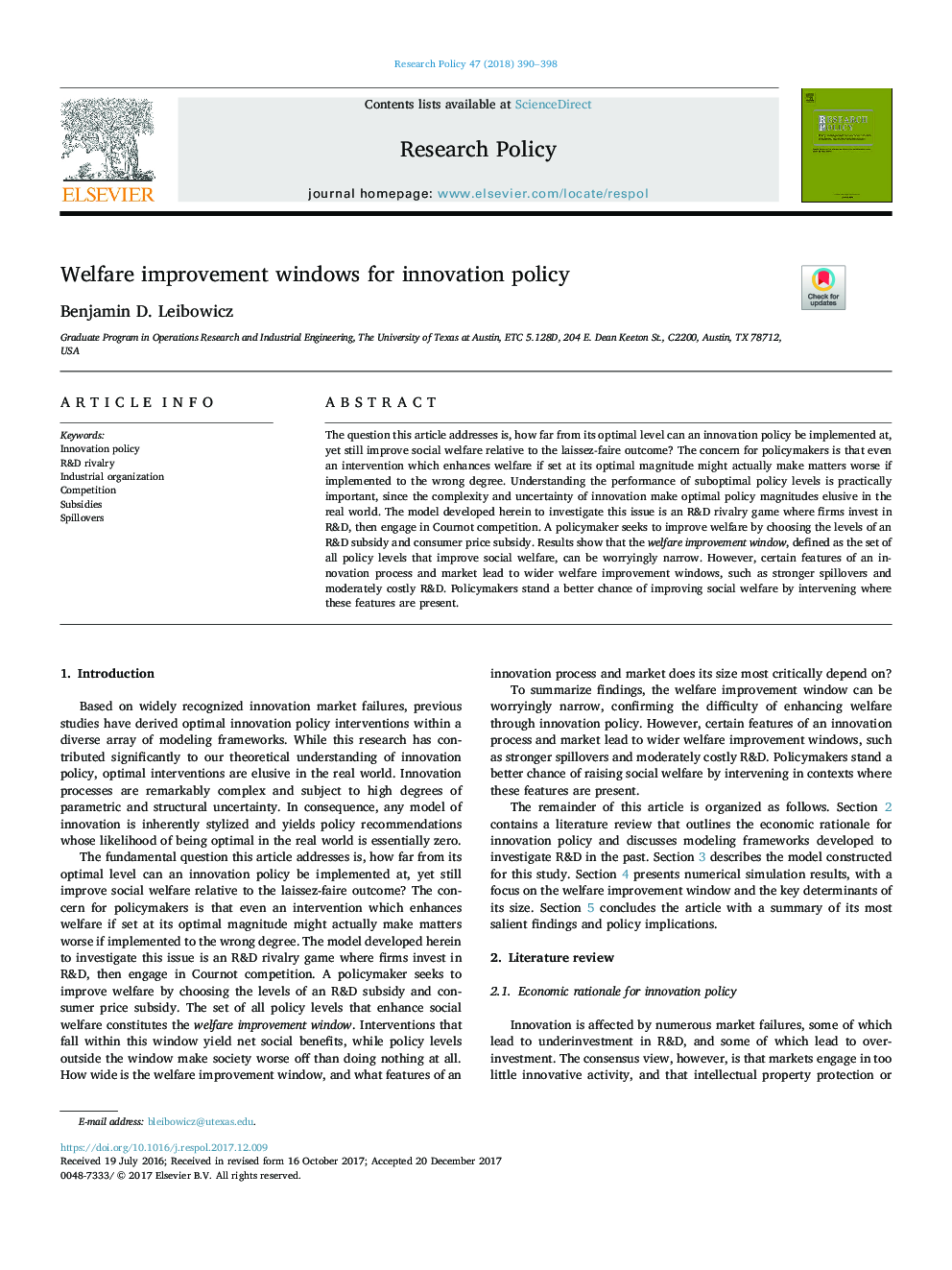| Article ID | Journal | Published Year | Pages | File Type |
|---|---|---|---|---|
| 7384535 | Research Policy | 2018 | 9 Pages |
Abstract
The question this article addresses is, how far from its optimal level can an innovation policy be implemented at, yet still improve social welfare relative to the laissez-faire outcome? The concern for policymakers is that even an intervention which enhances welfare if set at its optimal magnitude might actually make matters worse if implemented to the wrong degree. Understanding the performance of suboptimal policy levels is practically important, since the complexity and uncertainty of innovation make optimal policy magnitudes elusive in the real world. The model developed herein to investigate this issue is an R&D rivalry game where firms invest in R&D, then engage in Cournot competition. A policymaker seeks to improve welfare by choosing the levels of an R&D subsidy and consumer price subsidy. Results show that the welfare improvement window, defined as the set of all policy levels that improve social welfare, can be worryingly narrow. However, certain features of an innovation process and market lead to wider welfare improvement windows, such as stronger spillovers and moderately costly R&D. Policymakers stand a better chance of improving social welfare by intervening where these features are present.
Related Topics
Social Sciences and Humanities
Business, Management and Accounting
Business and International Management
Authors
Benjamin D. Leibowicz,
